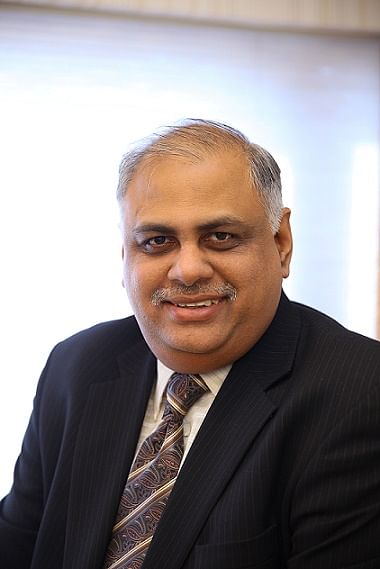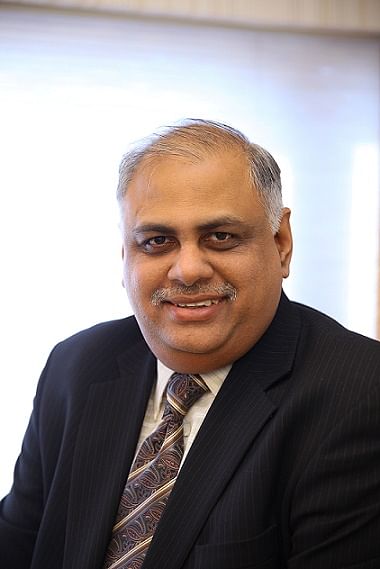
"We need to create pathways for the young to succeed", says Mr. K. Sankara Narayanan of Aircel
Come January every year, the city of Chennai gears up to host India’s only ATP Tour event that sees some of the top players in the world visit the country in preparation for the first Grand Slam of the year, the Australian Open. The Aircel Chennai Open celebrated two decades of existence with the recently concluded 2015 edition that saw top seed Stan Wawrinka from Switzerland retain his crown in singles action, while Yen-Hsun Lu of Taiwan and Jonathan Marray of Great Britain took home the title in doubles.
The tournament has been present in many avatars since 1996, but for the last six years it’s been the Aircel Chennai Open with the telecom major being a proud title sponsor of the event.

Aircel’s association with sports
Mr. K. Sankara Narayanan, who heads Aircel’s Strategic Business Unit-1, has had a courtside view of the action over the last couple of years, having overseen the company’s association with the tournament.
Mr. Narayanan states that Aircel as a brand is very high on sports sponsorship.
“There are four things that are very central to people’s lives, particularly young people: sports, entertainment, jobs and careers,” he says, adding that Aircel is keen to make its presence felt in this sphere.
The Aircel Chennai Open is one of three sporting properties that the brand is associated with; it has been the shirt sponsor of the Chennai Super Kings IPL franchise since its inception with the Aircel logo emblazoned across their jerseys, while in the recently christened Indian Super League, the brand has entered into a principal sponsorship of Atletico de Kolkata, the first winners of India’s newest football league. So it’s been a hat-trick of victories for Aircel.
Aircel spends about one-third of its advertising budget on sports sponsorship.
Branding based on crowd engagement
He also explains the thinking behind the various associations that the brand has gotten into. The cricket and football partnerships he says were more about the mass connect while the Aircel Chennai Open, addressed a more niche, urban, upmarket and affluent audience in comparison.
Specifically why CSK and the Chennai Open, because the brand is essentially a Chennai brand and it was only logical to get behind the local IPL team and a major tennis tournament here, whereas with ISL and ATK, he says the company had identified that Kerala, Kolkata, Goa and the North-East were the hotbeds of Indian football. And, since they were looking to expand their presence in the North-East, they decided to partner with a club based in Kolkata, where they have a big market.
“We want to be associated with sports that connect with different audiences, and we want to make sure that we’re involved in a big way with the team or the event”, adds Mr. Narayanan.
I ask him about the change in sporting culture that he’s seen in India over the years. He says that one of the biggest things according to him is how television and the internet have led to not just an increased, but also wider following of international sport.
“Today, people are following international cricket, not just when India plays, there is IPL, there is European football, there is F1, there’s tennis… you name it. Earlier, outside of cricket, it used to be restricted to maybe watching the Olympics every four years, then football world cup every four years, that’s it”, says Mr. Narayanan.
Players interaction
Through the Aircel Chennai Open, the brand aims at getting a larger audience to connect with the sport. Contributing to the organizing of a world class tournament that helps people, especially kids and youngsters, see some of the top players in the world, up close in person is something the brand is keen on.
Last year, the company organized a meet-and-greet session with Indian tennis star Leander Paes for a few organizations that work with underprivileged children. The children were extremely delighted to meet up with him and spent a good half day interacting with Paes. This year, Feliciano Lopez, world No. 14 and the number two seed at the event, had a similar session at the Aircel exclusive store where fans got to interact with the Spaniard and take home signed merchandise.
Bringing in accomplished players has helped elevate the image of the tournament and bring in new audiences.
“In any sport, when our local players get to play with seasoned internationals, it’s not just about learning techniques, it’s about learning professionalism, how they deal with various things, learning about their fitness regimes, which is very important in today’s sports world and how they handle situations on the field and off the field”, says Mr. Narayanan as he talks about how the mushrooming of leagues and tournaments in India has helped provide a fillip to sport.
Promotions by the company
As part of the 20th year celebrations, Aircel had quite a few promotions centred around the event this time. Throughout the seven days of the event, the company had a kiosk set up inside the stadium where daily quizzes where held, along with allowing visitors to play a game of tennis on the Nintendo Wii and win prizes.
A ‘3G Fastest Ace’ competition was held at Phoenix Market City mall before the commencement of the tournament and was continued inside the stadium on all match days as well. A tour of the Aircel Chennai Open trophy was undertaken across schools, colleges, malls and various tennis schools and academies in particular, as a means to create awareness and raise the tournament’s profile.
Sports Infrastructure is the key
So as our conversation continues, I ask what the next logical step in the progression of sport in India should be. He says, it’s now about providing different playing conditions and bringing up accessible sports clubs.
“Like for cricket, we should have different types of pitches in different parts. If the team is say, going to Sri Lanka, they should come to Chennai to practice on turning wickets. If the team is going to England, they should develop the Mohali wicket similar to English conditions, so that they can practice. Kolkata, say, should be developed like an Australian wicket and so on. And likewise for tennis, the next set of investment should be in providing good clay and grass court surfaces too”, conveys Mr. Narayanan.
He also feels that, the more sports clubs spring up in every community, the better it will become for budding sportsmen to go there, practice their trade and get better. He narrates his experience in Shanghai, China, where he worked for a few years, saying there were tennis courts, all of the same quality, spread out across every area in the city where he would play almost three hours of tennis every day. He wants the same to be emulated here, through either a private-public partnership or even community fundraising.
Give your best shot
Mr. Narayanan was backing Spain’s Feliciano Lopez at this year’s edition of the Aircel Chennai Open, but was so impressed with eventual runner-up Aljaz Bedene that he began to firmly support him after he accounted for Lopez.
He cites Bedene as a prime example of what he envisions for a modern, diverse society. He says, “Not everybody can become an engineer or doctor or lawyer. It is not possible and should not be allowed either in a fully functional society. What should be present is a clear path for anyone choosing to ply their trade in a certain field. Sport is one of those many avenues, where we as a society need to create pathways for the young generation to succeed.”
He also cautions against loading expectations onto the young saying, “We must also make sure that it is not a gold medal or bust thing. To give a tennis example, not everyone can become Roger Federer, that doesn’t mean they are failures. If we can provide them with the infrastructure and opportunities for them to adopt off-beat careers that help them earn a decent living and gives them something that they’re not ashamed to talk about, we have done our job.”
(Mr. Sankara Narayanan is an avid sportsman himself having played cricket, tennis, badminton and ball badminton through his life. He has a special affinity for cricket and tennis in particular, where he’s been known to send down booming big serves and beaming bouncers).